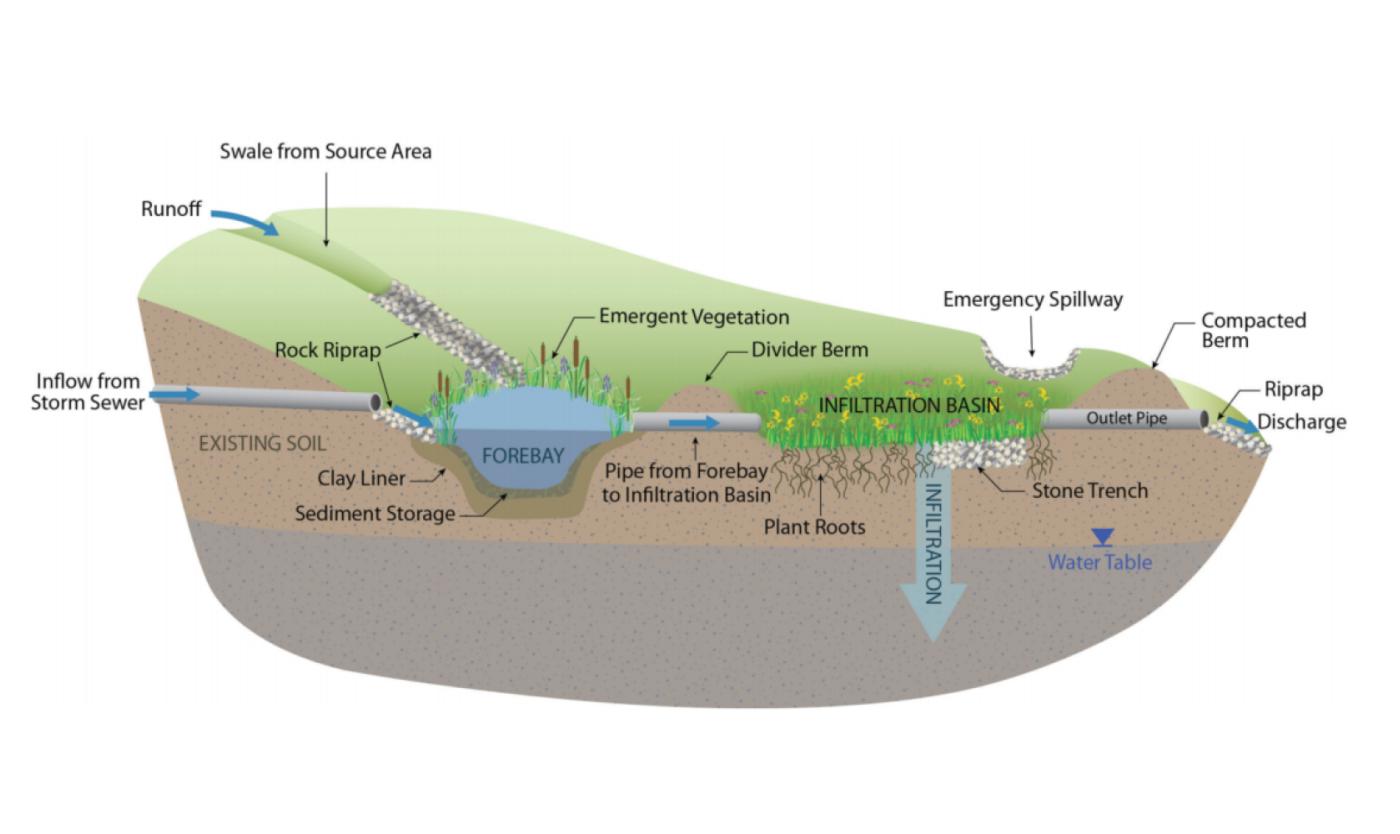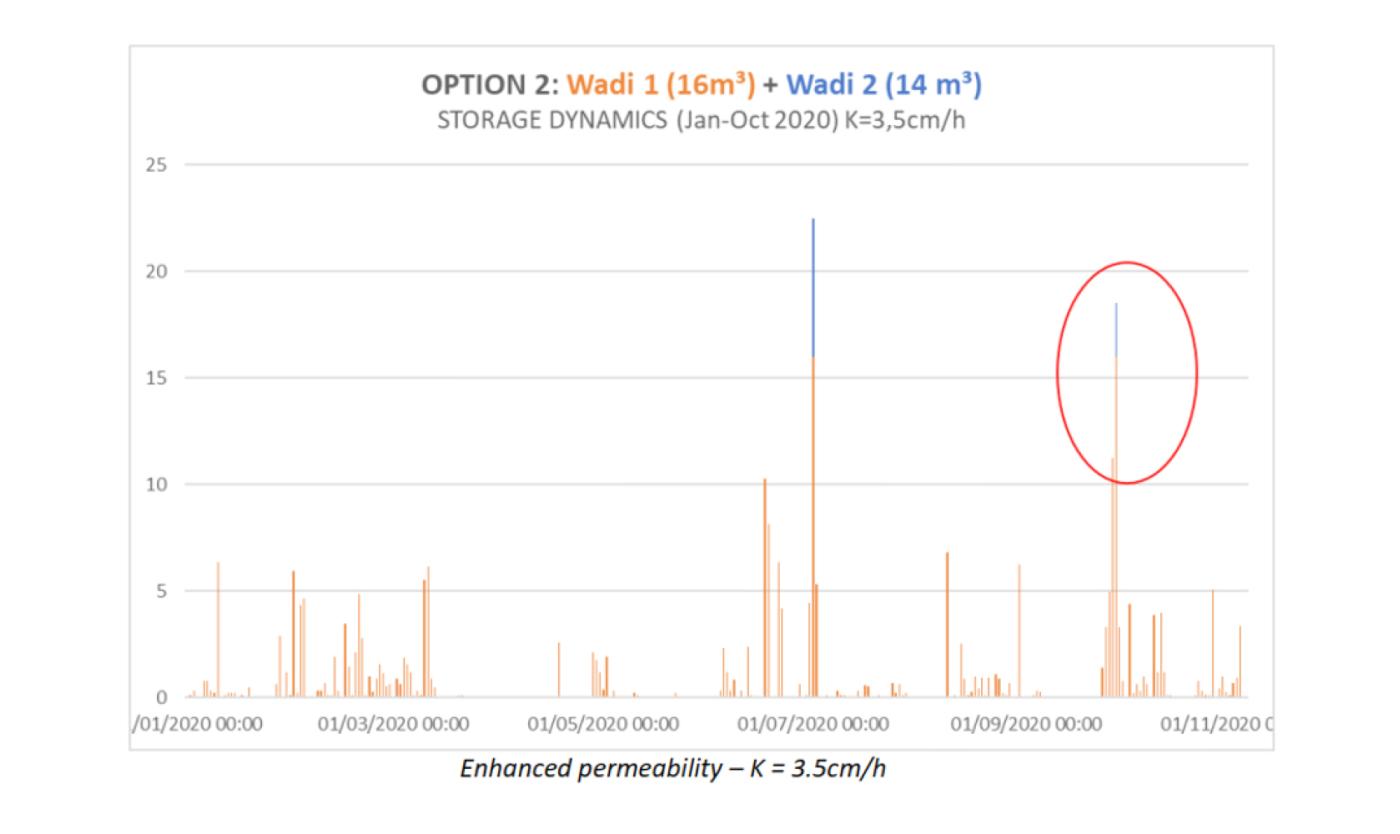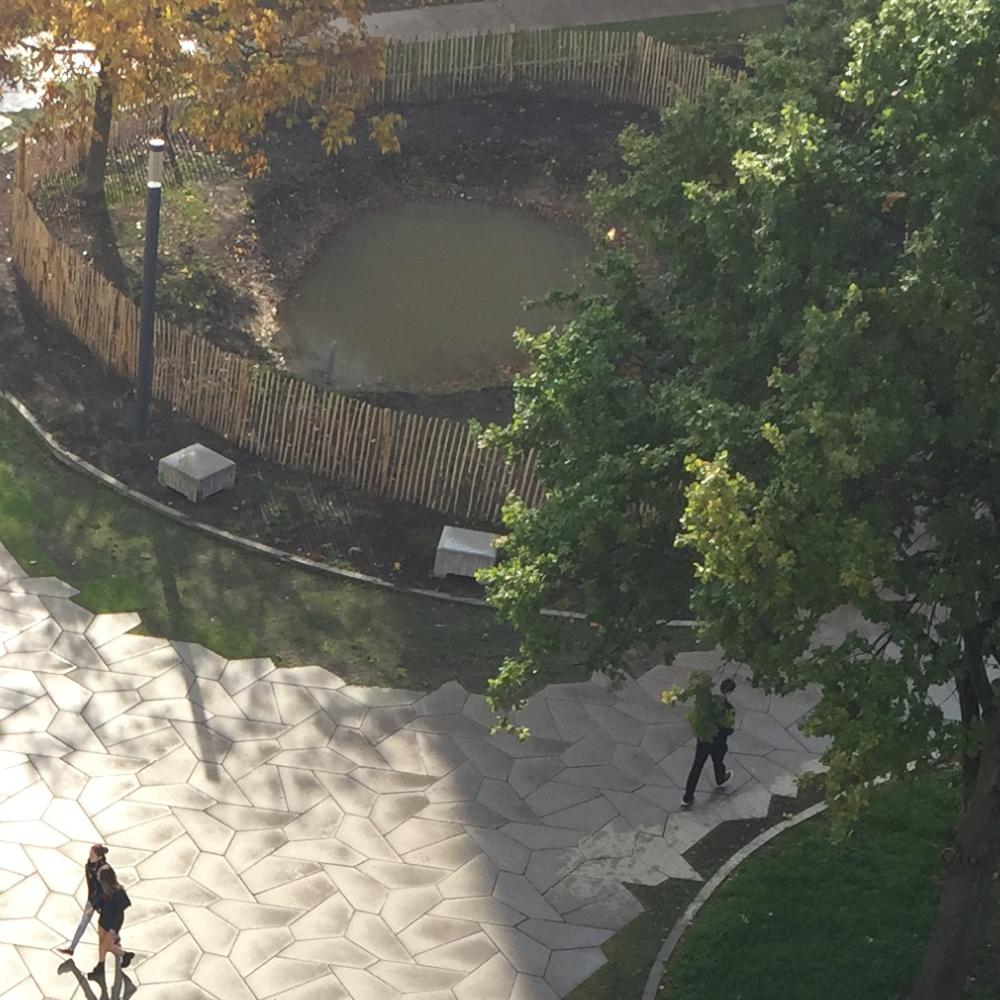Our ambition: 'zero rainwater waste'
In urban environments, much of the rain falls on paved surfaces, such as roofs, roads, and car parks. As a result, rainwater cannot seep into the ground but it is rapidly drained away, usually to the sewerage system, which in case of extreme rainfall regularly leads to flooding. In this way, rainwater is treated as a waste product, while it is actually a valuable water source.
Given that we are increasingly faced with extended periods of drought, we have to start treating rainwater differently. Therefore, in the years ahead VUB is striving for ‘zero rainwater waste’ for both campuses.
How can we achieve this? First, we need to identify where and how much rainwater is currently lost, and then we need to look for possible alternatives: storage and reuse, infiltration, and so on.
Zero rainwater waste building Z
We’ve already done this for building Z. Following the renovation of the building, we disconnected a large part of the roof area (960 m²). Now the rainwater is no longer sent to the sewer. The alternative solution is a combination of a green roof (60 m²), rainwater storage for limited reuse (155 m²) and drainage into two wadis (745 m²).

A combination of two wadis
The Hydrology department worked out a solution with two wadis. The first wadi has limited capacity and serves as the first buffer. It will contain water (max. 40 cm) almost permanently. In case of heavy rain, the excess water from the first wadi flows over into the second.
The second wadi is designed as a quick infiltration zone. It is actually a small depression with (tall) grass, with a sublayer of gravel. This layer ensures rapid infiltration in case of extreme rainfall. The second wadi will only be used a few times a year and is therefore dry for most of the year.

